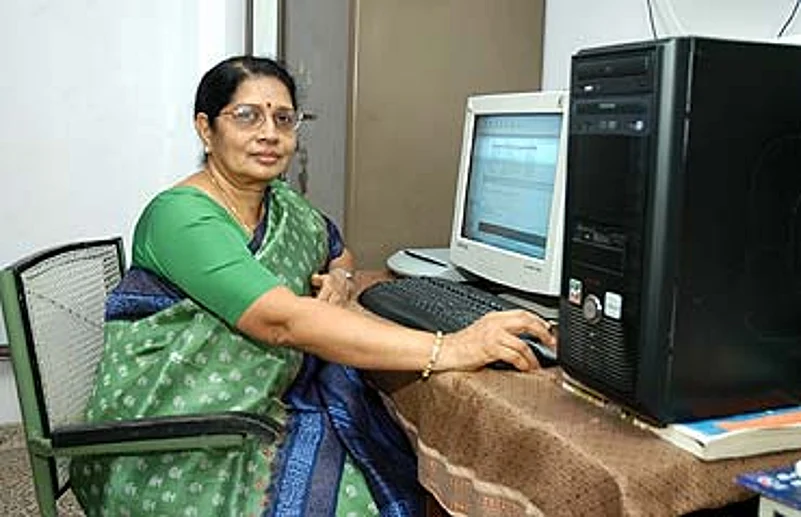
Like her, D.R. Suma is also at the frontline of India's space mission. After graduating from the Government Engineering College in Thrissur, Suma joinedISRO in 1983 and began work as a quality assurance engineer for the space ordnance group. That meant ensuring that the pyro devices, which fire a launch vehicle, work with clockwork perfection. "It is a very challenging task right from the stage of design. Pyro devices are single-shot devices. The only way to test them is to put them to real use," she says. Suma, as an assistant director, is now responsible for reviewing and coordinatingISRO's launch vehicle project.
G. Madhavan Nair, ISROchairman, is all praise for his women scientists who he says are "as good" as everyone else. "We are extremely happy with them. They have made significant contribution and have very good opportunities to progress in the organisation. That in itself is an incentive for other women to join us," he added. The women scientists Outlook was granted access to at ISRO insisted they had never faced any gender discrimination. But does being a woman make their work any more difficult than what it is for their male counterparts?
"Not that we face gender discrimination, but we do have to put in twice the effort to convince others that we can
deliver," admits Geeta Varadan, who works as programme director and is responsible for formulating satellite programmes for specific purposes such as cartography. "Also, working atISRO can often involve late and strenuous hours of work but that does not mean we can offer excuses as women for not doing so. We have to learn how to balance our home and office and live with our dual responsibilities," adds Varadan, who joined the National Remote Sensing Agency in 1979.
This necessity of dividing time between work and family, some believe, gives the women atISRO an edge over their male colleagues. "Women tend to be better time managers and team workers," says Suma. "They are also better at multi-tasking and have better people skills," adds Sheila Iyer, who heads the organisation's human resource division. Nonetheless, there is still a long way to go to dispel gender disparity atISRO and in Indian science. The space organisation, since its inception, has had six directors. None of them was a woman.

T.S. Ramadevi of the Vikram Sarabhai Space Centre
Given the triple burden of home, work and societal prejudices, including gender-related nepotism, women have to be extremely motivated to land cutting-edge scientific jobs like those atISRO. "I was extremely motivated by Vikram Sarabhai, about whom I read a lot," says Radhika Ramachandran, who joinedISRO in 1984. She worked on probing the lower atmosphere and developing weather models for predicting short-term weather during launches.
Varadan argues that things have indeed improved for women scientists. "When I was at the College of Engineering at Osmania University in 1967, there were just three girls. Today, they account for half the student population." Furthermore, given the celebrity tag attached to Williams and Chawla, many are hopeful that it would motivate more women to take up space science in India. "Sunita Williams still manages to inspire me at this age. Had I been younger and given another chance and appropriate training, I would have loved to become an astronaut," adds 60-year-old Ramadevi.
Now thatISROis working on its first manned mission, these women scientists and many others are hopeful of it being India's first woman-man space mission as well. The preliminary project has been approved and, if all goes well, it should take off in a decade's time. The plan involves sending a two-member crew on an orbital vehicle to a height of 400 km from the earth's surface. Whenfinalised, ISRO will also begin selecting and training potential astronauts. "It is very likely that one of the two would be a woman, but beyond a point your gender becomes irrelevant as an astronaut. What matters is your capability to adapt to extremely stressful and isolated environs, your ability to be alert to any danger and the necessity to have high levels of psychological stamina," says Suma.















